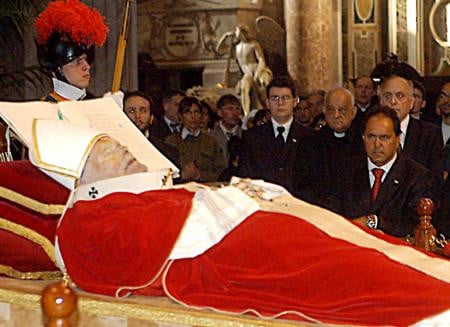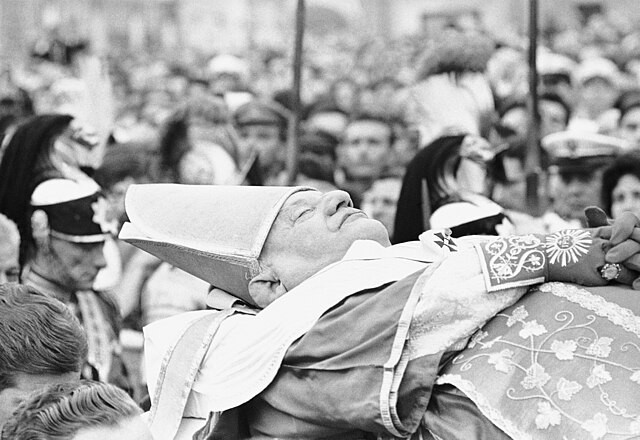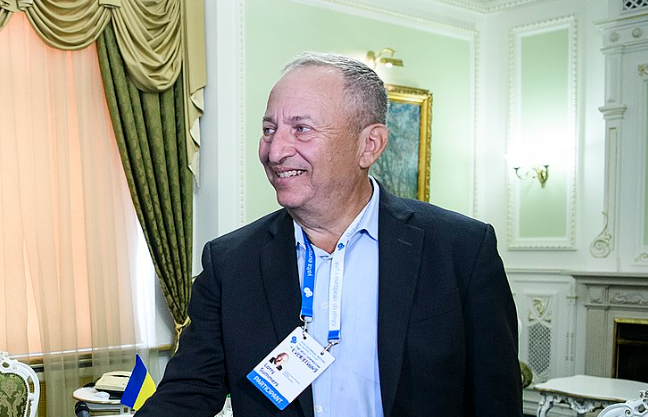What Exactly Happens When the Pope Dies?

© Wikimedia Commons
What happens when the pope dies?
In recent months, concerns about the health of Pope Francis have sparked global conversations about the future of the Catholic Church.
As the 86-year-old pontiff faces ongoing medical issues, including respiratory problems and mobility challenges, many are beginning to ask: what happens when the pope dies?
The question is not just a matter of curiosity but a reflection of the profound impact the pope’s passing would have on over a billion Catholics worldwide.
The death of a pope is a moment of profound significance, not only for the Catholic Church but for the world at large.
It marks the end of an era and sets in motion a series of ancient, meticulously orchestrated rituals that blend spirituality, tradition, and governance.

But what exactly happens when the leader of over a billion Catholics passes away?
From the immediate protocols to the election of a new pope, the process is steeped in history and symbolism.
Let’s explore what happens when the pope dies and why this process continues to captivate the world.
The Announcement and Immediate Aftermath
When a pope dies, the first step is the formal announcement of his death. The Camerlengo, a high-ranking cardinal, is responsible for confirming the pope’s passing.
Traditionally, the Camerlengo performs a centuries-old ritual: he gently taps the pope’s forehead three times with a silver hammer while calling out his Christian birth name.
If there is no response, the pope is declared dead. The Vatican then announces the news to the world, often with the phrase, “The Chair of Saint Peter is vacant.”
The Funeral Tradition
The death of a pope follows a long-standing tradition, though each funeral and burial carries its own unique elements. When Pope Francis passes, his funeral will differ from that of his predecessors, largely due to the significant reforms he has introduced to the process. In 2024, Pope Francis revised the Ordo Exsequiarum Romani Pontificis (Order of Funerals for Roman Pontiffs), updating practices set by previous popes.
Previously, the confirmation of the pope’s death took place in his private chambers, as outlined in the first edition of the Ordo, approved by Pope John Paul II in 1998. However, in the revised edition, the pope’s death will now be confirmed in the pontiff’s chapel. Regardless of where this confirmation occurs, the camerlengo is responsible for removing the Pope’s Ring of the Fisherman, which is then broken and buried with him. This ring, symbolizing the pope’s authority, has traditionally been used to seal correspondence and is kissed by individuals when they meet the Pope.
After the pope’s death, his apartment is sealed, and this area remains closed until a new pope is elected. Traditionally, popes have been placed in three coffins—cypress, lead, and oak—which are nested within each other. This multi-coffin tradition will change under Pope Francis’s wishes. Reflecting his desire for simplicity, Pope Francis has opted for a single, simpler wooden coffin, in line with his approach to streamline various aspects of the papal funeral.
The funeral will also reflect a change in how the pope is presented to the public. Unlike previous pontiffs, who were traditionally displayed in an elevated platform (a catafalque) dressed in red to symbolize the blood of martyrs and Christ, Pope Francis has decided to be viewed in his coffin instead. This change is in keeping with his desire to adapt the rites to more clearly express the Church’s faith in the resurrection of Christ.
Another significant departure is the location of Pope Francis’s burial. While popes were traditionally interred at the Vatican, Pope Francis, in keeping with the new Ordo Exsequiarum, will be buried at the Basilica of Santa Maria Maggiore in Rome, a church he holds a strong personal connection to. This will place him alongside six other popes, including Pope Clement IX, who was buried there in 1669.
This Is What John Paul II Didn’t Want to Happen After He Died
An interesting contrast to these reforms can be seen in the funeral decisions of Pope John Paul II. When John Paul II died in 2005, he chose not to be embalmed, a decision that diverged from the long-standing tradition of embalming popes for public viewing. His decision was reportedly personal, though it disappointed those involved in the preparation of the pope’s body, such as mortician Massimo Signracci.
Despite the lack of embalming, John Paul II’s body was prepared for five days of public viewing, which some observers felt left his face looking somewhat gray. Following this period, John Paul II was buried in the crypt beneath St. Peter’s Basilica, a final resting place that has since become a revered site.
The Period of Sede Vacante

The time between the pope’s death and the election of his successor is known as sede vacante (Latin for “the vacant seat”).
During this period, the College of Cardinals assumes temporary governance of the Church. The Camerlengo oversees the Vatican’s administrative functions, ensuring the continuity of operations.
One of the most symbolic acts during this time is the destruction of the papal ring, known as the Ring of the Fisherman.
This ring, used to seal official documents, is ceremonially crushed to prevent any forgeries during the interregnum. The Vatican also prepares for the conclave, the secretive process by which a new pope is elected.
The Conclave and Election of a New Pope
The process of transitioning from one pope to the next is a deeply sacred and meticulously planned series of rituals, steeped in centuries of tradition.
For those curious about how this unfolds, the recent film Conclave offers a dramatic yet detailed portrayal of the election process. It sheds light on the secrecy, intrigue, and spiritual gravity of selecting a new leader for the Church.

From the moment Pope Francis’ death would be confirmed to the election of his successor, every step is governed by ancient protocols that blend faith, governance, and global attention.
The conclave is perhaps the most anticipated event following the pope’s death. Cardinals from around the world gather in the Sistine Chapel to vote for the next pope.
The process is shrouded in secrecy, with strict rules to ensure confidentiality. Voting continues until a candidate receives a two-thirds majority.
When a new pope is chosen, white smoke rises from the Sistine Chapel’s chimney, signaling to the world that the Catholic Church has a new leader.
You might also want to read: Pope Francis Sends Message From Hospital Bed Amid Critical Condition


